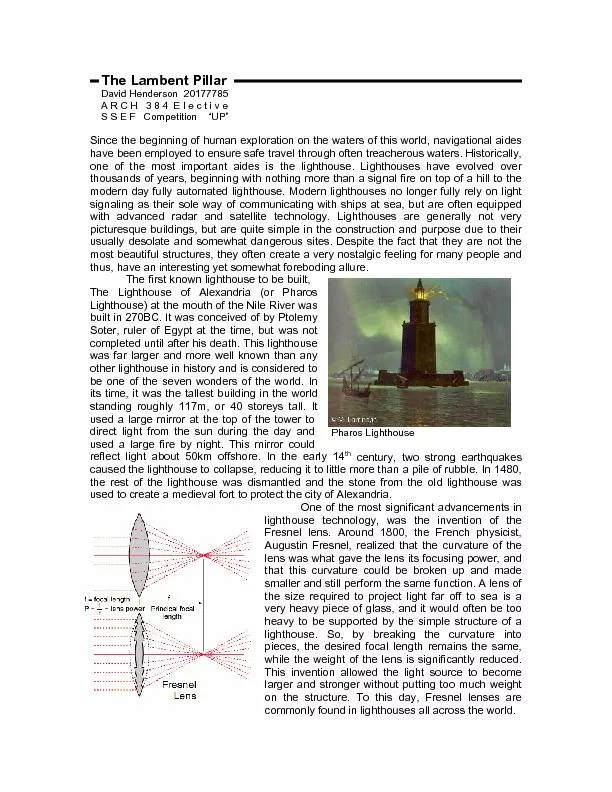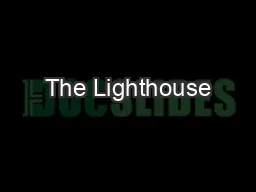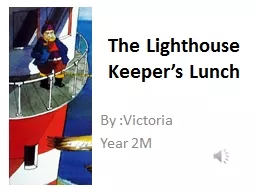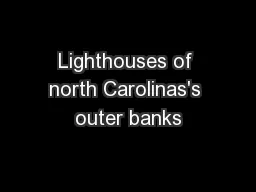PDF-Pharos Lighthouse David Henderson 20177785 S S E F Competition
Author : calandra-battersby | Published Date : 2016-06-19
Les Eclarieus Lighthouse Reinforced Concrete Construction Rawley Point Lighthouse Steel Skeleton Tower Construction Up until the 20 century lighthouses have required
Presentation Embed Code
Download Presentation
Download Presentation The PPT/PDF document "Pharos Lighthouse David Henderson 20177..." is the property of its rightful owner. Permission is granted to download and print the materials on this website for personal, non-commercial use only, and to display it on your personal computer provided you do not modify the materials and that you retain all copyright notices contained in the materials. By downloading content from our website, you accept the terms of this agreement.
Pharos Lighthouse David Henderson 20177785 S S E F Competition: Transcript
Download Rules Of Document
"Pharos Lighthouse David Henderson 20177785 S S E F Competition"The content belongs to its owner. You may download and print it for personal use, without modification, and keep all copyright notices. By downloading, you agree to these terms.
Related Documents














